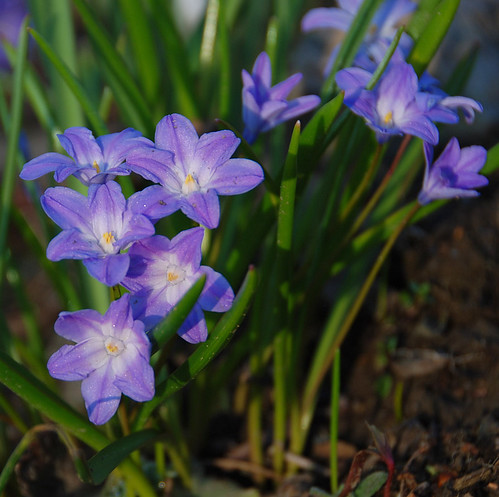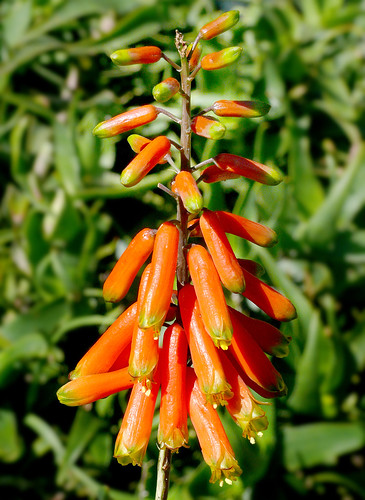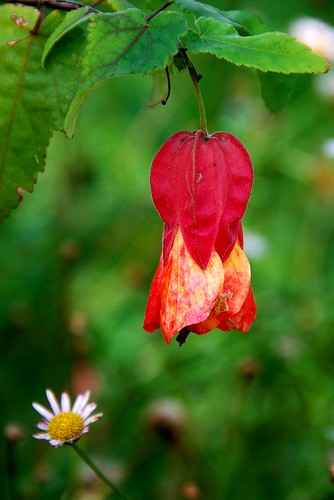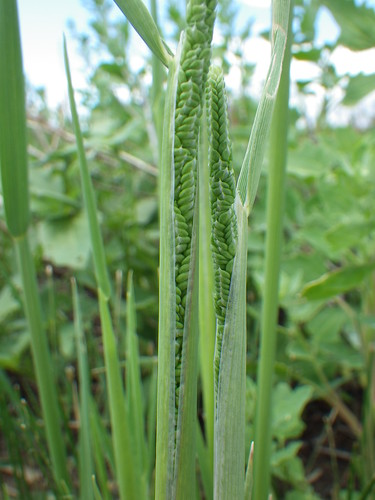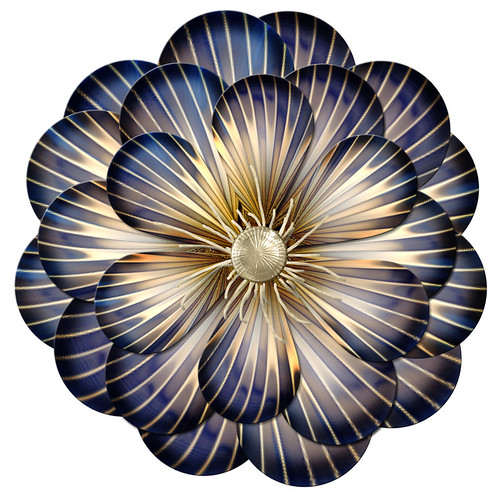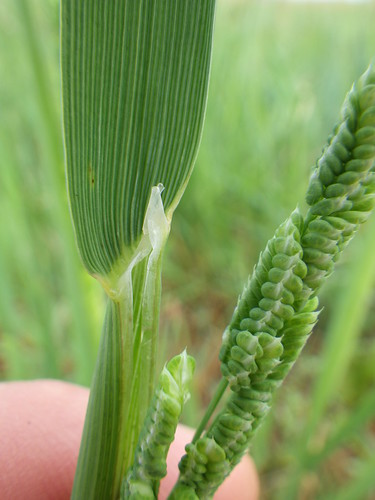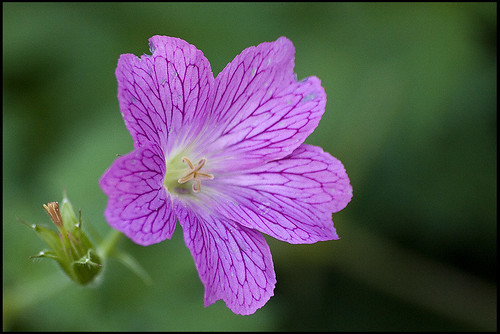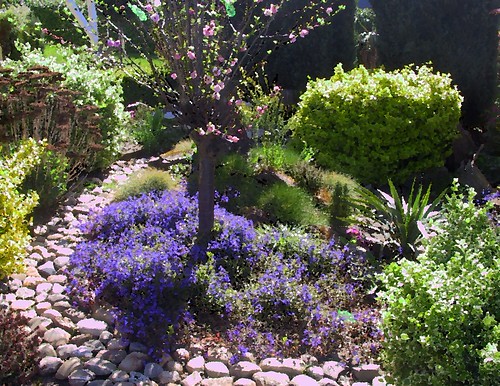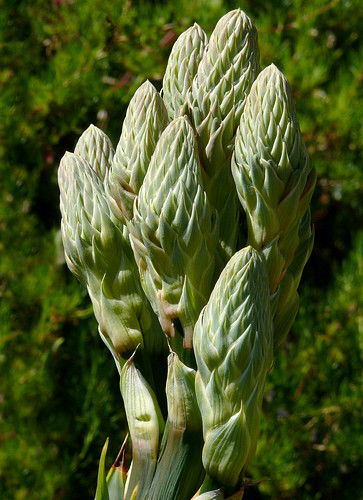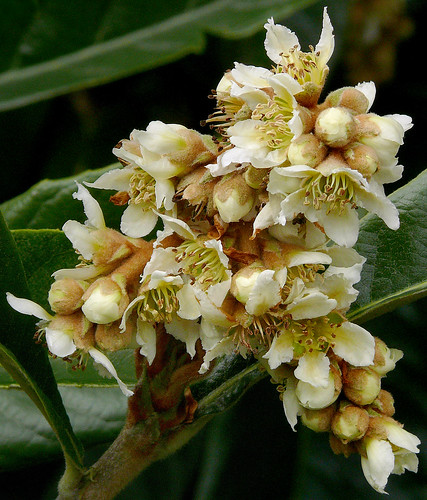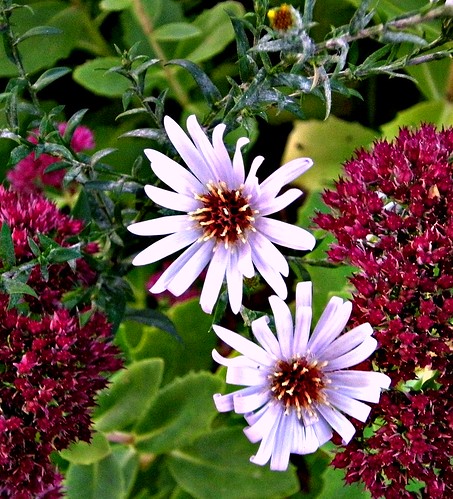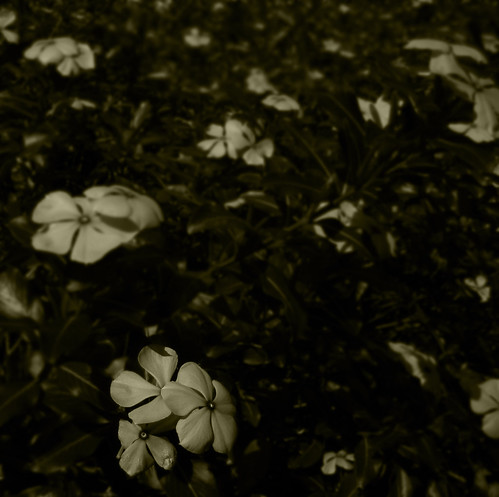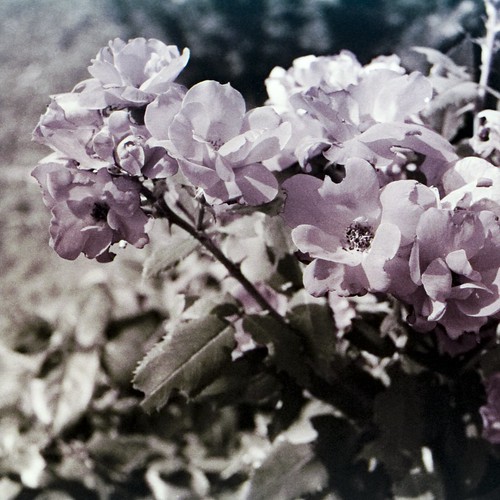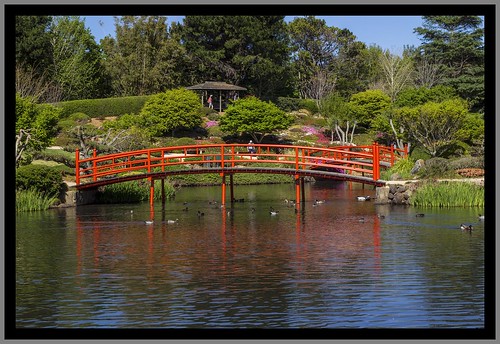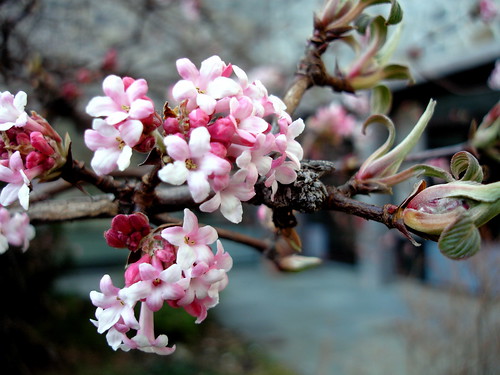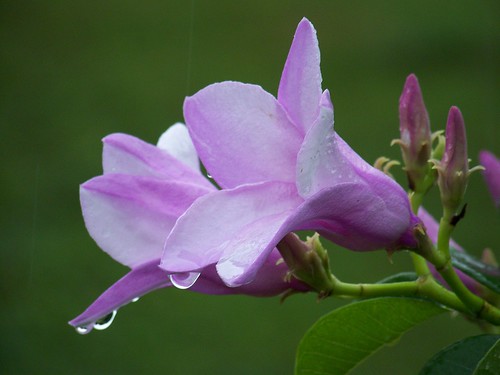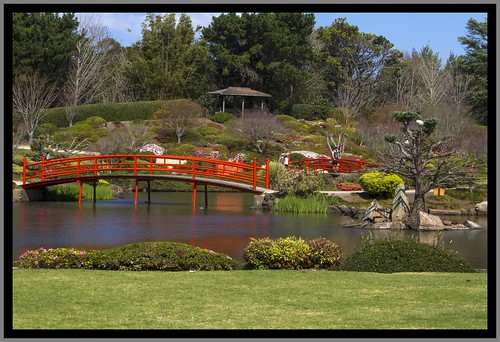Info on Irises?
I need to find out about the reprocutive system of an iris, and I would also like to find pictures. I also need interesting tidbits about this species of flower. Can anybody direct me to a place where I can get this info? (Google has not been much help...)
inflorescence best answer:
Answer by Neraj
Iris is a genus of between 200-300 species of flowering plants with showy flowers which takes its name from the Greek word for a rainbow, referring to the wide variety of flower colors found among the many species. As well as being the scientific name, iris is also very widely used as a common name and refers to all Iris species as well as some closely related genera. It is the state flower of Tennessee.
[edit] Description
The genus is widely distributed throughout the north temperate zone. Their habitats are considerably varied, ranging from cold regions into the grassy slopes, meadowlands, stream banks and deserts of Europe, the Middle East and northern Africa, Asia and across North America.
They are perennial herbs, growing from creeping rhizomes (rhizomatous irises), or, in drier climates, from bulbs (bulbous irises). They have long, erect, flowering stems, which may be simple or branched, solid or hollow, and flattened or have a circular cross-section. The rhizomatous species usually have 3-10 basal, sword-shaped leaves growing in dense clumps. The bulbous species have cylindrical basal leaves.
The inflorescences are fan-shaped and contain one or more symmetrical, six-lobed, slightly fragrant flowers. These grow on a pedicel or lack a footstalk. The three sepals are spreading or droop downwards. They expand from their narrow base into a broader limb (= expanded portion), often adorned with lines or dots. The three, sometimes reduced, petals stand upright, partly behind the sepal bases. Some smaller iris species have all six lobes pointing straight outwards. The sepals and the petals differ from each other. They are united at their base into a floral tube, that lies above the ovary. The styles divide towards the apex into petaloid branches (see pollination, below).
The iris flower is of special interest as an example of the relation between flowering plants and pollinating insects. The shape of the flower and the position of the pollen-receiving and stigmatic surfaces on the outer petals form a landing-stage for a flying insect, which in probing the perianth for nectar, will first come in contact of perianth, three with the stigmatic stamens in one whorl surface which is borne and an ovary formed of three carpels. The shelf-like transverse projection on the inner whorl under side of the stamens, which is beneath the over-arching style arm below the stigma, so that the insect comes in contact with its pollen-covered surface only after passing the stigma, while in backing out of the flower it will come in contact only with the non-receptive lower face of the stigma. Thus, an insect bearing pollen from one flower, will in entering a second, deposit the pollen on the stigma, while in backing out of a flower, the pollen which it bears will not be rubbed off on the stigma of the same flower.
[edit] Classification and taxonomy
Iris pseudacorus
Rhizomes of ornamental irisesUp to 300 species have been placed in the genus Iris. Modern classifications, starting with W. R. Dykes' 1913 book, have subdivided them. Dykes referred to the major subgroupings as sections, but later authors have generally called them subgenera, while essentially retaining his groupings. Like some older sources, the influential classification by G. I. Rodionenko removed some groups (particularly the bulbous irises) to separate genera, but even if this is done the genus remains large and several subgenera, sections and/or subsections are recognised within it.
There are six subgenera, of which five are restricted to the Old World, and the sixth (subgenus Limniris) with a Holarctic distribution; the two largest subgenera are further divided into sections.
Iris subgenus Iris
bearded irises, growing from rhizomes.
Iris subgenus Iris sect. Iris
Iris albertii Regel
Iris albicans Lange
Iris aphylla L. – Stool Iris
Iris attica (Boiss. & Heldr.) Hayek
Iris cypriana Foster & Baker
Iris germanica L. – German Iris
Iris imbricata Lindl.
Iris lutescens Lam. – Crimean Iris
Iris marsica I.Ricci & Colas.
Iris mesopotamica – Mesopotamian Iris
Iris pallida Lam. – Sweet Iris
Iris pumila L.
Iris reichenbachii Heuff.
Iris sambucina L.
Iris scariosa Willd. ex Link
Iris schachtii Markgr.
Iris suaveolens Boiss. & Reut.
Iris subbiflora Brot.
Iris taochia Woronow ex Grossh.
Iris variegata L. – Hungarian Iris
Iris subgenus Iris sect. Oncocyclus
Iris acutiloba C.A.Mey.
Iris assadiana Chaudhary, Kirkw. & C. Weymolauth
Iris atrofusca Bak.
Iris atropurpurea Bak.
Iris barnumae Bak. & Fost.
Iris bismarckiana Reg.
Iris camillae Grossh.
Iris gatesii Foster
Iris haynei (Bak.) Mallet.
Iris iberica Hoffm.
Iris loretii Barbey.
Iris mariae Barbey.
Iris meda Stapf
Iris paradoxa Steven
Iris petrana Dinsm.
Iris sari Schott ex Bak.
Iris sofarana Fost.
Iris susiana L. – Mourning Iris
Iris subgenus Iris sect. Psammiris
Iris bloudowii Ledeb.
Iris humilis Georgi
Iris subgenus Iris sect. Hexapogon
Iris falcifolia Bunge
Iris longiscapa Ledeb.
Iris subgenus Iris sect. Pseudoregelia
Iris goniocarpa Bak.
Iris hookeriana Fost.
Iris kamaonensis Wall.
Iris tigrida Bunge ex Ledeb.
Iris subgenus Iris sect. Regelia
Iris hoogiana Dykes
Iris korolkowii Regel
Iris stolonifera Maxim.
Iris subgenus Limniris
beardless irises, growing from rhizomes.
Iris subgenus Limniris sect. Limniris
Iris bracteata S.Wats. – Siskiyou Iris
Iris brevicaulis Raf. – Zigzag Iris
Iris bulleyana Dykes
Iris caespitosa Pall. & Link
Iris chrysographes Dykes
Iris chrysophylla T.J.Howell – Yellowleaf Iris
Iris clarkei Bak.
Iris crocea Jacquem. ex R.C.Foster
Iris delavayi Micheli
Iris douglasiana Herbert – Douglas Iris
Iris ensata Thunb. – Russian Iris
Iris fernaldii R.C.Foster – Fernald's Iris
Iris foetidissima L. – Stinking Iris
Iris forrestii Dykes
Iris fulva Ker-Gawl. – Copper Iris
Iris giganticaerulea Small – Giant Blue Iris
Iris graminea L.
Iris grant-duffii Bak.
Iris hartwegii Baker – Hartweg's Iris
Iris hexagona Walt. – Dixie Iris
Iris innominata Henderson – Del Norte Iris
Iris kerneriana Asch. & Sint.
Iris koreana Nakai
Iris lactea Pall.
Iris laevigata Fisch. – Rabbitear Iris
Iris lazica Albov
Iris loczyi Kanitz
Iris longipetala Herb.
Iris lorea Jank.
Iris macrosiphon Torr. – Bowltube Iris
Iris missouriensis Nutt. – Rocky Mountain Iris
Iris monnieri DC.
Iris munzii R.C. Foster – Munz's Iris
Iris nelsonii Randolph – Abbeville iris
Iris orientalis Mill. – Yellowband Iris
Iris pontica Zapal.
Iris prismatica Pursh ex Ker-Gawl. – Slender Blue Iris
Iris pseudacorus L. – Yellow Iris
Iris purdyi Eastw. – Purdy's Iris
Iris ruthenica Ker-Gawl.
Iris sanguinea Hornem. ex Donn – Japanese Iris - ja:アヤメ
Iris setosa Pallas ex Link – Beachhead Iris
Iris sibirica L. – Siberian Iris
Iris sintenisii Janka
Iris spuria L. – Seashore Iris
Iris tenax Dougl. ex Lindl. – Toughleaf Iris
Iris tenuifolia Pall.
Iris tenuissima Dykes – Longtube Iris
Iris tridentata Pursh – Savanna Iris
Iris unguicularis Poir.
Iris verna L. – Dwarf Violet Iris
Iris versicolor L. – Harlequin Blueflag
Iris virginica L. – Virginia Iris
Iris wilsonii C.H.Wright
Iris subgenus Limniris sect. Lophiris
Iris confusa Sealy
Iris cristata Ait. – Crested Iris
Iris gracilipes A.Gray
Iris japonica Thunb.
Iris lacustris Nutt. – Dwarf Lake Iris
Iris milesii Foster
Iris tectorum Maxim. – Wall Iris
Iris tenuis S.Wats. – Clackamas Iris
Iris wattii Baker ex Hook.f.
Iris subgenus Xiphium (syn. genus Xiphion), a group of bulbous irises.
Iris subgenus Xiphium sect. Xiphium
Iris boissieri Henriq
Iris filifolia Boiss.
Iris juncea Poir.
Iris latifolia Mill.
Iris serotina Willk. in Willk. & Lange
Iris tingitana Boiss. & Reut. – Morocco Iris
Iris xiphium L. – Spanish Iris. or Dutch Iris
Iris subgenus Nepalensis (syn. genus Junopsis); also bulbous.
Iris subgenus Nepalensis sect. Nepalensis
Iris collettii Hook.
Iris decora Wall.
Iris subgenus Scorpiris (syn. genus Juno); also bulbous.
Iris subgenus Scorpiris sect. Scorpiris
Iris albomarginata R.C.Foster
Iris aucheri (Baker) Sealy
Iris bucharica Foster
Iris caucasica Hoffm.
Iris cycloglossa Wendelbo
Iris fosteriana Aitch. & Baker
Iris graeberiana Tubergen ex Sealy
Iris magnifica Vved.
Iris palaestina (Bak.) Boiss.
Iris persica L.
Iris planifolia (Mill.) Fiori & Paol.
Iris pseudocaucasica Grossh.
Iris regis-uzziae Feinbrun
Iris rosenbachiana Reg.
Iris vicaria Vved.
Iris subgenus Hermodactyloides (syn. genus Iridodictyum); also bulbous.
Iris subgenus Hermodactyloides sect. Hermodactyloides
Iris bakeriana Foster
Iris danfordiae (Baker) Boiss.
Iris histrio Rchb.f.
Iris histrioides (G.F.Wilson) S.Arn.
Iris reticulata Bieb.
Iris vartanii Fost.
Iris winogradowii Fomin
Some authors regard the Snake's Head Iris as lying outside genus Iris, and classify it as Hermodactylus tuberosus.
[edit] Cultivation
Irises are extensively grown as ornamental plants in gardens. The most commonly found garden iris is the bearded German Iris and its numerous cultivars. Various wild forms and naturally occurring hybrids of Iris pallida and I. variegata form the basis of most all modern hybrid bearded iris. Median forms of bearded iris [intermediate bearded (IB), miniature tall bearded (MTB), etc] are derived from crosses between tall and dwarf varieties. Other iris types commonly found in garden are I. siberica and its hybrids (Siberian irises) and I. ensata and its hybrids (Japanese irises).
The bearded irises are easy to cultivate and propagate, and have become very popular in gardens. They grow in any good free garden soil, the smaller and more delicate species needing only the aid of turf ingredients, either peat or loam, to keep it light and open in texture. The earliest to bloom are the dwarf forms of Iris pumila, which blossom during March, April and May; and during the latter month and the following one most of the larger growing 'tall bearded' varieties, such as I. germanica, florentina, pallida, variegata, amoena, flavescens, sambucina, neglecta, ruthenica and their modern hybrids.
It should be noted that a true red standard, tall bearded Iris remains an unattained goal of frequent hybridizing and selection. There are species and selections thereof, most notably, Iris fulva, which has a relatively pure red color. However, getting this color into a modern Iris breed has proven very difficult, and thus, the vast majority of Irises are in the purple\blue range of the color spectrum.
The section Iris subgen. Iris sect. Oncocyclus contains the cushion or royal irises, a group of plants noted for their large, strongly marked flowers. Between 30 and 60 species are classified in this section, depending on the authority. Compared with other irises the cushion varieties are scantily furnished with narrow sickle shaped leaves and the flowers are usually borne singly on the stalks. The closely allied Iris subgenus Iris sect. Regelia, includes several garden hybrids with species in sect. Oncocyclus, known as "Regelio-cyclus" irises. They are best planted in September or October in warm sunny positions, the rhizomes being lifted the following July after the leaves have withered.
Iris unguicularis (syn. I. stylosa) is a late winter flowering species from Algeria, with sky-blue flowers blotched with yellow, produced (in the Northern Hemisphere) from November to March or April.
Many other smaller species of bulbous iris, being liable to perish from excess of moisture, should have a well-drained bed of good but porous soil made up for them, in some sunny spot, and in winter should be protected by a covering of half-decayed leaves or fresh coco-fibre refuse. To this set belong I. milifolia, I. junonia, I. danfordiae, I. reichenbachii and others which flower as early as February and March.
The cushion irises are somewhat fastidious growers, and to be successful with them they must be planted rather shallow in very gritty well-drained soil. They should not be disturbed in the autumn, and after the leaves have withered the roots should be protected from heavy rains until growth starts again naturally.
[edit] Uses
Rhizomes of the bearded iris are the source of orris root and are used in perfume and medicine, though more common in ancient times than today. Today Iris essential oil (absolute) from flowers are sometimes used in Aromatherapy as sedative medicines. The dried rhizomes are also given whole to babies to help in teething. Magellan Gin uses iris root and flower, for flavor and color.[1]
Iris rhizomes contain terpenes, organic acids (miristic acid, undecilene acid, tridecilic acid), glycosides iridin, and the leaves contain ascorbic acid.
Perfumery
Iris rhizomes are harvested, dried, and aged for up to 5 years. In this time, the fats and oils inside the roots undergo degradation and oxidation, which produces many fragrant compounds that are invaluable in perfumery. The scent is said to be similar to violets. The aged rhizomes are steamed distilled which produces a thick oily compound, known in the perfume industry as iris butter.
Art
The Artist George Gessert has specialised in breeding Irises.[2]
The Artist Vincent van Gogh has painted several famous pictures of irises. [3]
The Artist Philip Hermogenes Calderon painted an iris in Broken Vows - 1856. He followed the principles of an artistic group calling themselves the Pre-Raphaelite Brotherhood. An ancient legacy of the iris is the belief that it served as a warning to be heeded; as it was named for the messenger of Olympus. It also conveys images of lost love and silent grief for young girls were led into the afterlife by Iris. Broken Vows was accompanied with poetry by Henry Wadsworth Longfellow when it was first exhibited.
[edit] Symbolism
The fleur-de-lis, a stylized iris, descends from the white iris which is native to Florence, Italy and which grew even in its city walls. This white iris, displayed against a red background, became the symbol of Florence until the Medici family, to signal a change in political power, reversed the colors making the white one red and setting in motion a centuries-long breeding program to hybridize a red iris. Catherine de Medici carried this symbol of Florence to Paris when she married the king of France where this most famous of irises acquired its moniker, fleur-de-lis. Contemporary uses can seen in the Quebec flag and the logo of the New Orleans Saints professional football team. The iris has been associated with France as Louis XII adopted it as a symbol in the 12th Century. Furthermore it is also the almost universal symbol of Scouting
inflorescence
Beckmannia syzigachne
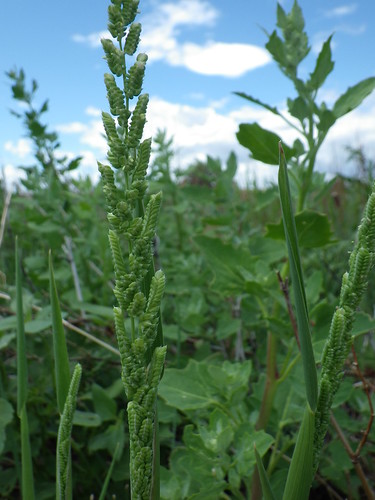
The inflorescences of spiklets that are stongly laterally compresses and stacked like pancakes in a secund arrangement is very characteristic of this species.
Orignal From: Info on Irises? and Beckmannia syzigachne
